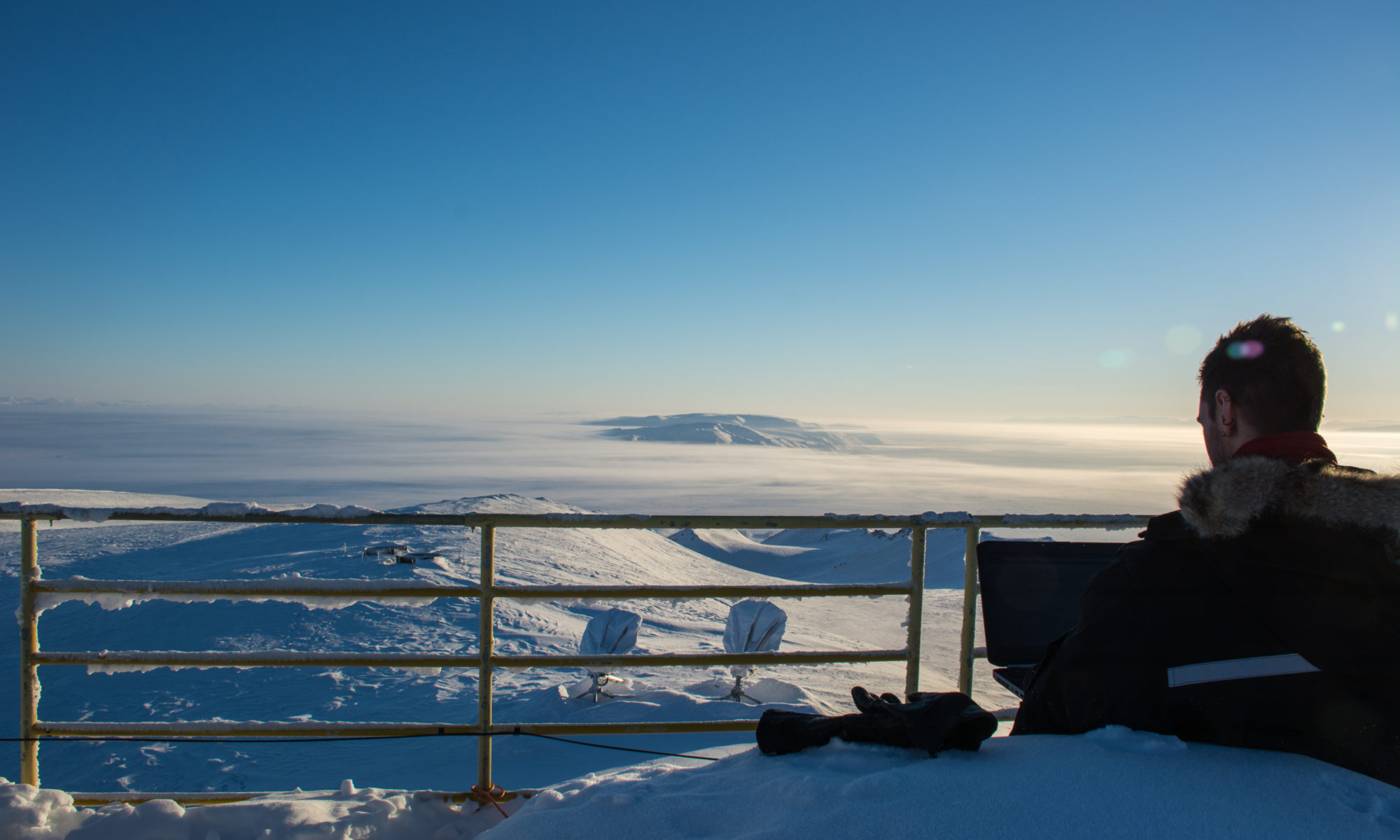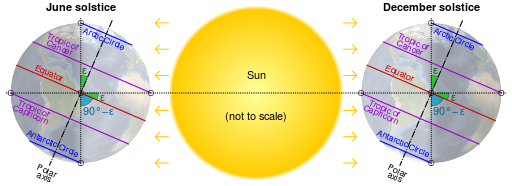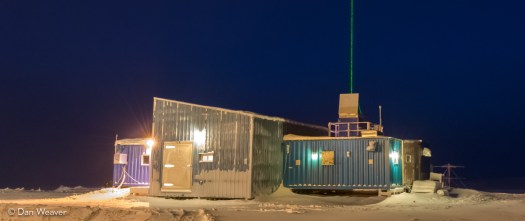Finally done my doctorate
It has been a long road, but I have at last reached a significant milestone:
I’ve finished my Ph.D.
Working towards this goal at U of T’s Physics Dept. has been a difficult but rewarding experience. I’m thankful to many people. My supervisor, Prof. Kim Strong, especially, as well as my fieldwork teammates. Graduate school is an opportunity to grow and change. I’ve tried to make the most of it. I thought I’d reflect on a few highlights.
Fieldwork at PEARL
Travelling to the frozen northern edge of Canada each winter to maintain and operate instruments at the end of Polar Night was an incredible experience. (Part one of my articles about the campaigns for U of T News; a Virtual Tour of PEARL slideshow.)

Spending a month at a time in an extremely remote and cold environment isn’t for everyone. But it was a great fit for me. I have developed a great affection for Canada’s Arctic.

In addition to the opportunity to contribute to important research – the measurements we took during campaigns was used to study the Canadian Arctic atmosphere, but also contributed to international networks studying our changing global atmosphere and validate satellite measurements – it was also an opportunity to develop and apply my interest in photography. I am delighted that the photos I took while at PEARL have been used in national newspapers, on the covers of science journals, and more. It was great fun.

(More photo highlights can be found here.)
Science advocacy and marches
During my first trip to PEARL in 2012, funding for the lab was ended as part of systematic cuts to Canadian science. My longstanding interest in politics primed me to take action. I wrote letters to politicians, talked to the media, contributed to science advocacy organizations, and helped to organize science marches in Toronto.
Marching down major streets of Canada’s largest city was an exhilarating experience. Most of all, I met incredible people also advocating for science in Canada.

Sharing PEARL’s Arctic research with the public
I believe PEARL’s work is important. But until I was on Kim’s research team, I had never heard of it. Nor was I aware of Canada’s incredibly successful science satellite, the Atmospheric Chemistry Experiment (ACE). I tried to raise the profile of these research projects. I can’t claim all Canadians know about PEARL and ACE. But I’d like to think that my school visits in Ontario and Nunavut, dozen public talks, social media channels, and other efforts have broadened recognition of their importance.

Science is largely funded by the public. I believe scientists should actively seek to connect with the public.

Travel to conferences
I travelled to two major international conferences during grad school: the 2014 American Geophysical Union (AGU) meeting in San Francisco and the 2018 European Geophysical Union (EGU) meeting in Vienna. It was gratifying to present my research. Connecting with researchers from around the world was eye-opening and inspiring.

A keynote at AGU by former-US astronaut and then-NOAA chief Kathryn Sullivan still occasionally surfaces in my head. She discussed how she saw NOAA as America’s ‘environmental intelligence’ organization, which I thought was an interesting way to frame its work. For some audiences, I imagine it is more effective than focusing on the inherent value of environmental protection and science – even though I find the latter persuasive.

In addition to conferences, I attended meetings of an international network PEARL measurements contribute to, giving me the chance to visit Switzerland, Japan, and Korea. I spent two weeks exploring Switzerland and Japan after the meetings with a friend of mine, Nathan. We had a great time on both trips. Both times I was left with the clear realization that Canada has really poor rail system… (I write this while on a train between Toronto and Ottawa that is an hour late…)

Starting an environmental organization on campus
I greatly enjoyed the interdisciplinary conversations I had with people at the U of T School of the Environment, where I took a collaborative program. I created an organization to foster a sense of community amongst the grad students there, the Graduate Environmental Students’ Association. One highlight for me was inviting Jennifer Baichwal to do a Q&A at a U of T screening of Watermark, a documentary she produced that explored society’s connections with water in collaboration renown Canadian photographer Edward Burtynsky. We held a screening of Watermark and had a Q&A with her. The execution of that event happened after I left GESA; it was nice to be able to sit back and enjoy it once the day arrived.

Teaching
Before grad school and my research internship at the Toronto Atmospheric Observatory (I have an interest in rooftop views), I took a degree in education and became an Ontario-certified physics and civics teacher. When I started grad school, I was keen to dive into duties as a Teaching Assistant. The department recognized my interest and qualifications and gave me opportunities to apply those skills as a Senior TA. I trained new graduate students in teaching and managed a large team of TAs for a first-year physics course.

Even more interesting, I co-created a pilot course connecting science students with entrepreneurship on campus. I worked with a Rotman School Prof. to give top U of T science undergrads a chance at applying their analytical skills on the real-world challenges faced by U of T startup companies. It was an good experience for everyone involved and it was a reminder to me that most students don’t go into academia after they graduate. I continue to believe we should do more to connect university undergraduate students with experiences and information related to non-academic career paths.
What’s next?
The journey was fulfilling, frustrating, and fun. I’d love to travel to PEARL one last time, but that’s unlikely. It’s time for something new.
I’m aiming to keep to keep engaged with the themes that defined my life over the last decade: physics and education, science and society, and interdisciplinary environmental issues. I’d like to fit in some music and outdoors time, too.
But where exactly I’m headed will be my next post. Onwards to 2019!





























